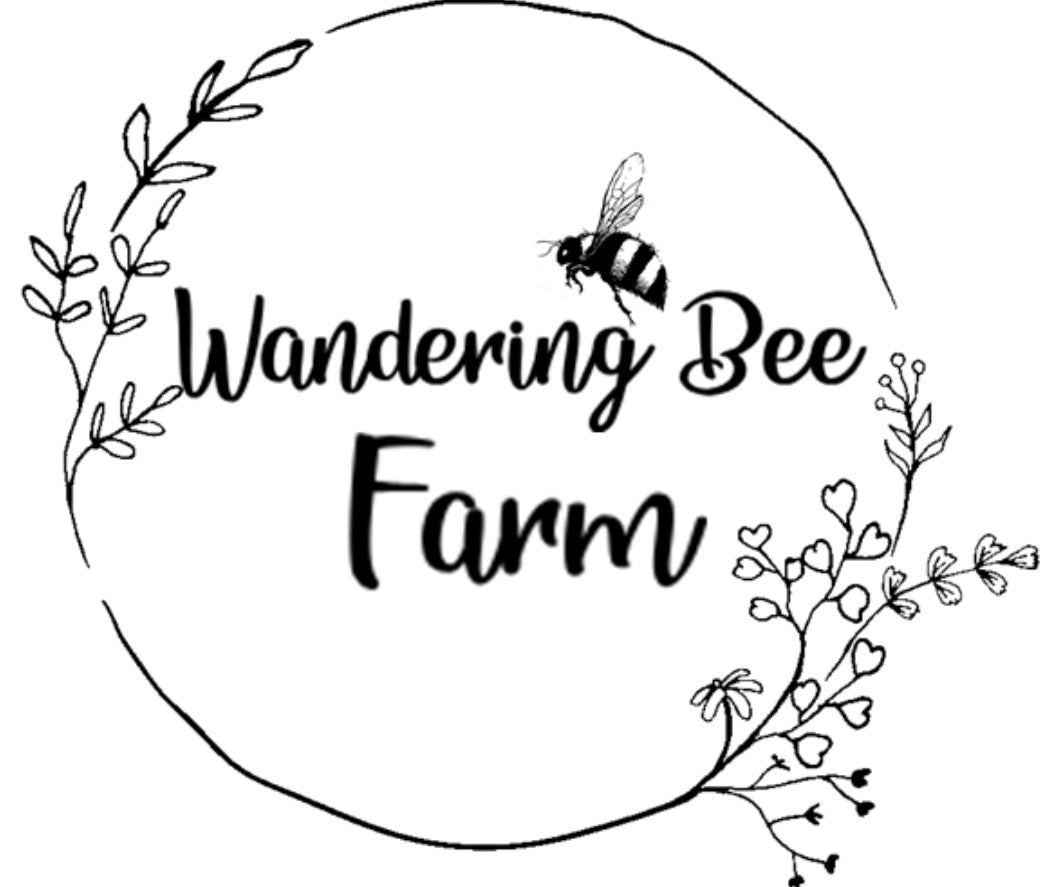How to Start Seeds: A Guide from Wandering Bee Farm & Apothecary
There’s something magical about starting seeds. It’s the beginning of a new growing season, a fresh start, and a step closer to a bountiful garden. Whether you’re growing herbs for teas, flowers for pollinators, or veggies for your table, starting seeds is a rewarding process. At Wandering Bee Farm & Apothecary, we’ve fine-tuned our seed-starting process, and we’re excited to share our tips with you!
Step 1: Choose Your Seeds Wisely
The first step is deciding what you want to grow. Consider your local climate, the space you have available, and your gardening goals. If you’re a beginner, start with easy-to-grow plants like basil, marigolds, or lettuce. For herbalists, we recommend chamomile, calendula, and echinacea as great starter herbs.
Step 2: Know When to Plant
Timing is everything when it comes to starting seeds. Some seeds need to be started earlier than others to ensure they have enough time to grow and thrive. Here are some general guidelines:
- Cold-hardy plants: Start seeds like kale, broccoli, and spinach early, as they can tolerate cooler temperatures and can be transplanted outdoors sooner.
- Long-growing season plants: Seeds such as tomatoes, peppers, and eggplants need a head start indoors since they require a long growing season.
- Warm-season crops: Wait to start seeds for plants like cucumbers and squash closer to the last frost date, as they grow quickly and prefer warm soil. Check your seed packets for specific guidance and use a gardening calendar tailored to your region to plan your planting schedule.
Step 3: Gather Your Supplies
You don’t need fancy equipment to start seeds, but a few essentials can make the process smoother:
- Seed trays or containers: You can use store-bought seed trays or repurpose items like yogurt cups or egg cartons.
- Seed-starting mix: This lightweight, nutrient-rich soil is perfect for seedlings.
- Labels: Keeping track of what you planted is key!
- A spray bottle: For gentle watering.
- A sunny windowsill or grow lights: Seedlings need plenty of light to thrive.
Step 4: Prepare Your Containers
Fill your containers with seed-starting mix, leaving about half an inch of space at the top. Lightly moisten the soil with water—it should feel like a wrung-out sponge.
Step 5: Plant Your Seeds
Follow the instructions on your seed packets for planting depth and spacing. As a general rule, plant seeds at a depth about twice their size. Cover them lightly with soil and gently press down to ensure good seed-to-soil contact.
Step 6: Water and Cover
Mist the soil with water to keep it moist, but avoid overwatering. Cover your containers with a plastic dome or plastic wrap to create a mini greenhouse, which will help retain moisture and warmth. Remove the cover once your seeds sprout.
Step 7: Provide Light and Warmth
Place your seed trays in a warm spot. Most seeds germinate well at 65-75°F. Once they sprout, move them to a sunny windowsill or place them under grow lights for 12-16 hours a day. Rotate your trays daily to ensure even growth.
Step 8: Thin Your Seedlings
Once your seedlings develop their first true leaves, thin them out by snipping the weaker ones at the soil level. This gives the remaining seedlings more space and nutrients to grow.
Step 9: Transplanting
When your seedlings have several sets of leaves and are strong enough to handle, it’s time to transplant them. Harden them off first by gradually introducing them to outdoor conditions over a week. Then, plant them in your garden or larger containers, giving them room to flourish.
Troubleshooting Common Issues
- Leggy seedlings: This usually means they’re not getting enough light. Move them closer to a light source.
- Dampening off: A fungal disease caused by overwatering or poor air circulation. Ensure proper watering and consider using a fan to increase airflow.
Growing with Wandering Bee Farm
Starting seeds is an act of hope and intention. It’s a reminder that with a little care and patience, we can cultivate beauty and sustenance in our lives. At Wandering Bee Farm & Apothecary, we’re here to support you every step of the way. From seed packets to herbal inspiration, we’ve got you covered.
What will you grow this season? Share your seed-starting adventures with us on Facebook or on Instagram at @wanderingbeefarm.
Happy planting!

